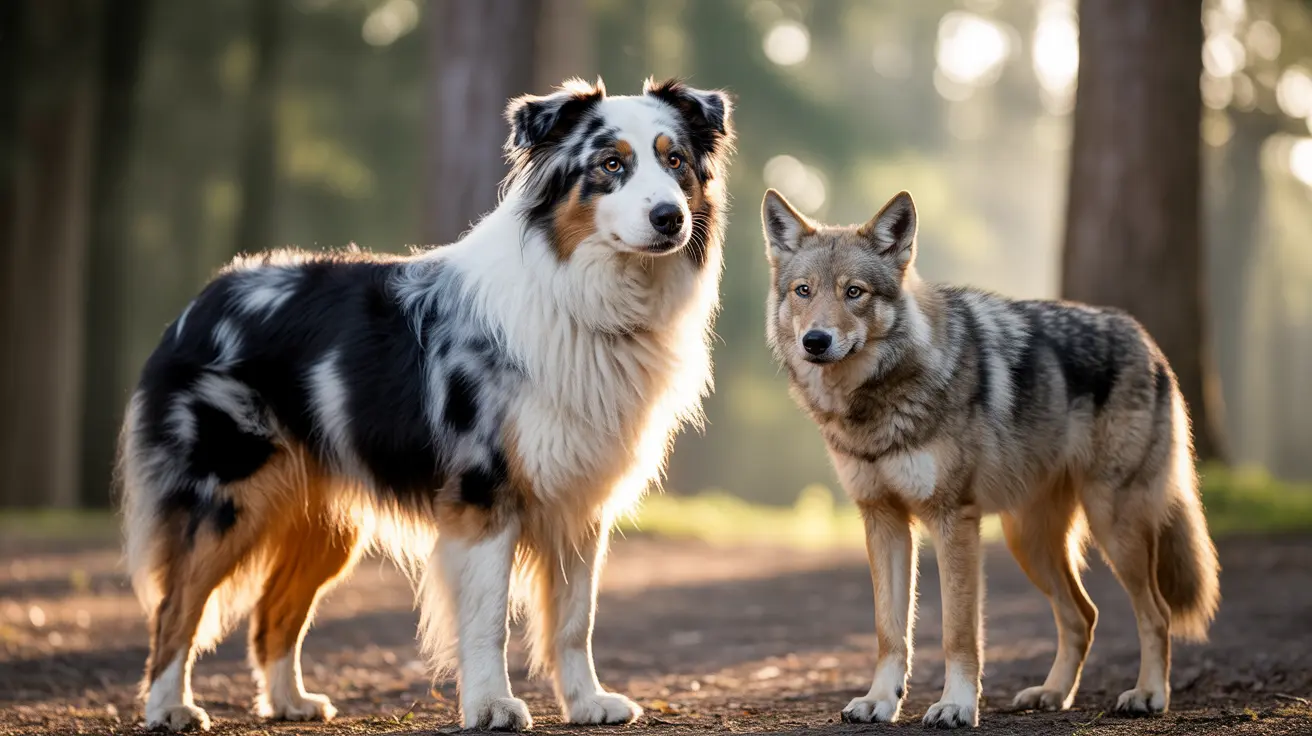While coyotes and domestic dogs share a common ancestry, their evolutionary paths have led to distinct differences in appearance, behavior, and lifestyle. Understanding the difference between coyote and dog characteristics is crucial for pet owners, especially those living in areas where these wild canids are present.
This comprehensive guide explores the key distinctions between these fascinating animals, helping you better understand their unique traits and ensuring safer interactions between domestic pets and wildlife.
Physical Characteristics and Appearance
The most noticeable difference between coyote and dog appearances lies in their build and size. Coyotes typically maintain a consistent appearance: lean, athletic bodies weighing 20-40 pounds, with distinctive pointed ears and narrow muzzles. Their fur usually presents in muted gray-brown tones perfect for camouflage.
Dogs, through centuries of selective breeding, show remarkable variety in their physical characteristics. From tiny Chihuahuas to massive Great Danes, domestic dogs exhibit an unprecedented range of sizes, shapes, and colors that far exceeds their wild counterparts.
Behavioral Traits and Social Structure
Coyotes retain their wild instincts, displaying cautious and territorial behavior. They typically hunt alone or in pairs, though family groups may form during pup-rearing seasons. Their complex vocal communications include distinctive howls, yips, and barks that serve various social purposes.
Domestic dogs, shaped by thousands of years of human companionship, show markedly different behavioral patterns. They're generally social, seek human interaction, and display varying degrees of trainability depending on their breed. Their pack structure typically centers around human family members rather than strict territorial boundaries.
Habitat and Adaptation
Coyotes demonstrate remarkable adaptability, thriving in diverse environments from wilderness areas to urban settings. They've successfully expanded their range across North America, showing particular skill at adapting to human-modified landscapes while maintaining their wild nature.
Dogs, conversely, rely heavily on human infrastructure and care. While some breeds maintain strong outdoor capabilities, most domestic dogs are adapted to living alongside humans in various housing situations, from apartments to rural properties.
Diet and Hunting Patterns
Wild coyotes are opportunistic hunters and scavengers, primarily targeting small mammals, birds, and insects while occasionally consuming fruits and vegetables. Their hunting skills are refined and crucial for survival.
Modern dogs, though omnivorous, typically rely on prepared food provided by their owners. While some breeds retain strong prey drives, few possess the hunting prowess necessary for independent survival.
Safety Considerations and Pet Protection
In areas where coyotes are present, pet owners must take precautions to protect their dogs, particularly small breeds. This includes supervising outdoor time, securing yard perimeters, and avoiding dawn and dusk activities when coyotes are most active.
Frequently Asked Questions
How can I tell the difference between a coyote and a dog based on their physical appearance?
Coyotes typically have pointed ears, long snouts, and lean bodies with gray-brown fur. They carry their bushy tails low, while dogs show more variety in appearance and often carry their tails higher. Coyotes also tend to move more stealthily and maintain a consistent size range.
What are the key behavioral differences between coyotes and domestic dogs?
Coyotes are naturally wary of humans, prefer solitude or small family groups, and display strong hunting instincts. Dogs are typically social with humans, show varied behavioral traits based on breeding, and rely on human care for food and shelter.
Are coyotes dangerous to dogs, and how should I protect my pets in coyote-populated areas?
While coyotes can pose a threat to dogs, especially smaller breeds, attacks are relatively rare. Protect your pets by supervising outdoor time, securing your yard, removing outdoor food sources, and keeping pets leashed during walks in coyote-active areas.
Can coyotes and dogs interbreed, and what are the traits of their hybrid offspring?
While possible, coyote-dog hybrids (coydogs) are rare in the wild. These hybrids often display unpredictable characteristics and are typically sterile. Most reported sightings of coydogs are actually misidentified pure coyotes or dogs.
Why do coyotes and dogs have different diets, and how does this affect their feeding habits?
Coyotes are opportunistic predators that hunt and scavenge for survival, while dogs have evolved to digest a more varied diet through domestication. This difference reflects their distinct evolutionary paths and relationships with humans.
Understanding these differences helps promote safer coexistence between domestic dogs and their wild relatives while deepening our appreciation for both species' unique characteristics and roles in our ecosystem.






